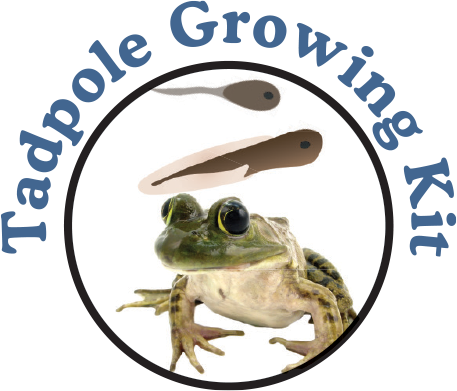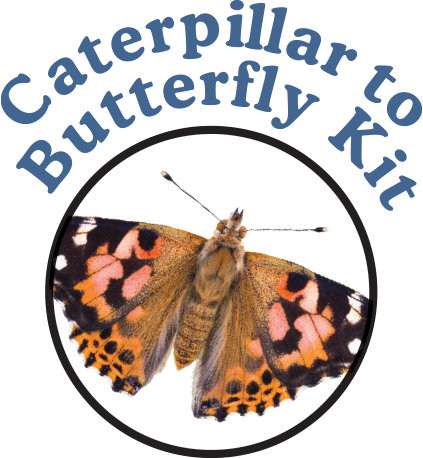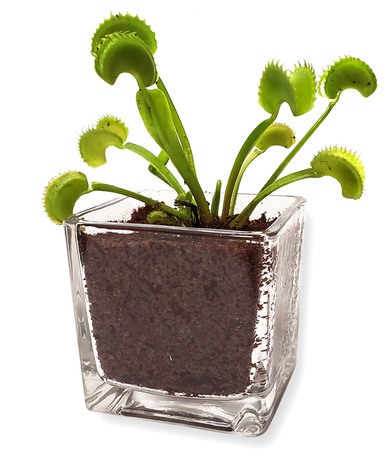Welcome To Venus Flytrap Terrarium Kit
Grow your own feared and famous meat eating plants!
Carnivorous plants are fascinating to grow and not as hard as you might think. North American carnivorous plants are native to peat bogs. They require a humid atmosphere and moist, acidic soil of low mineral content. Carnivorous plants eat insects to supplement the poor mineral nutrition in the soil they naturally grow in.
Setting up your Terrarium
WATER: For creating the terrarium initially you may use tap water. For all future watering you will need to provide rain water, reverse-osmosis water or buy distilled water (with no minerals added) from the store. Over time, tap or bottled water will kill them. Boiling the water does not help.
1) Get ready to get dirty! Put some old newspaper or paper towels down on your work area.
2) In a large bowl add your peat pellets and ¼ cup of water per peat pellet.
3) Soak the peat pellets for 1 hour and then pour any excess water out of your bowl. Now remove the outer wrapper of the pellets and spread the peat in the bottom of the terrarium. Note how damp the peat is as this is how damp you will want to keep the peat at all times.
4) Remove your plants from the plastic shipping bag then remove the moist paper towel and the root barrier fabric from around the roots. Now remove any dead leaves from the plants with sharp scissors. Don’t worry if they are wilting, they will spring back in a few days.
5) Plant your plants! Make sure the roots are completely covered by the peat. You can make a little mound of it in the place you want to plant your new friend, so that the roots are covered. You can spread the roots out some so they fit better in the peat mix. READ MORE
HINTS: Are the leaves turning black after planting? This usually means the plant needs time to adjust to transplanting. If the old leaves die back, it does not mean that the plant is dead. Just trim them off. New growth will probably become evident in 2 to 3 weeks. Any leaves that closed during shipping usually reopen within a week. Never give your plants ANY kind of fertilizer, it will kill them. A lid is not necessary for humidity so long as you keep the peat moist – but is good for keeping children of all ages from touching the plants.
Maintenance
WATER: These are bog plants so the peat should be soggy. Make sure to add more water weekly. Add it to the side of the terrarium, as these plants do not like wet leaves. Never let the peat dry out.
FOOD: Carnivorous plants live – as do other green plants – on water, air, minerals, and sunlight. Feeding them is not necessary, but it is a fun activity! Do not feed them until a week after setting up your terrarium. Feed them 1 living or dead soft-bodied insect, per whole plant, one to four times a month. It is a myth to feed them raw meat. It may contain salt and preservatives that can harm or kill carnivorous plants. Only feed insects. READ MORE
LIGHT: They love strong light. Grow indoors next to a sunny window where they can get sunlight for 4 or more hours each day. Sunlight through clouds is fine.
DORMANCY: Venus Flytraps have a ‘dormant’ period of a few months every year. When the days become shorter and cooler in the fall the plants begin to slow down, not grow as much, and will lose leaves as they go dormant. Trim these off. During dormancy a healthy plant can look almost dead on top but will begin to grow vigorously again sometime in the spring.
VENUS FLYTRAP:
The leaves of a Venus Flytrap are covered with fine hairs. Insects are attracted to the trap by nectar secreted from numerous glands around its edges. When an insect lands on the plant, the pressure on the hairs causes the jaw-like foliage to snap closed, trapping the insect inside. Glands in the trap then secrete digestive juices which consume the insect. The trap reopens within 3 to 5 days. If your Flytrap puts out a flower stalk it should be trimmed off. If you decide to let it flower remember that it will steal nutrients from the plant that could be used for more traps. Don’t be tempted to play with the traps of the Flytrap. Each trap has a limited number of closings – only 3 or 4 times. Then the leaf with the trap will die, to be replaced later with a new one. Each ‘false alarm’ trap closing robs the plant of resources so avoid poking it with your finger. As these plants mature their traps will turn black. All you have to do is cut the black traps off and watch as new traps appear in about six weeks. In the winter, their leaves dry up and turn black as they enter dormancy. They will regrow right back every spring.
Sundew Plant:
This plant may look harmless but it lures, captures, and digests insects using stalked sticky glands covering the leaf surface. It is some of the stickiest glue in nature! Gnats, mosquitoes, and other small insects get stuck and then their body fluids are absorbed by the plant. READ LESS READ LESS














